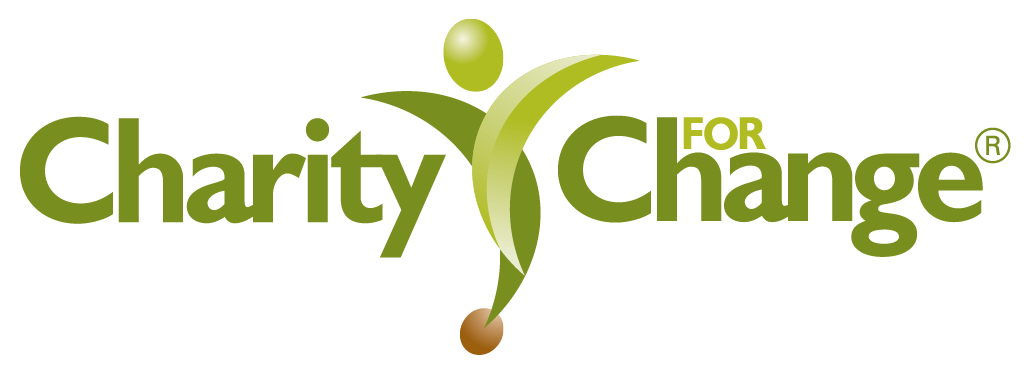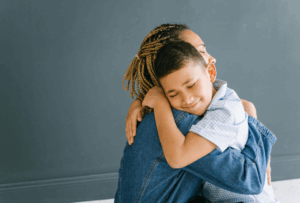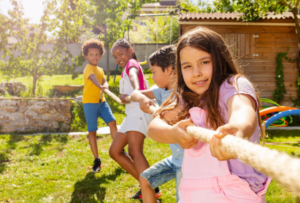By Karen Conley, President, CEO and founder of Charity for Change
As adults, most of us understand what responsibility is because we’re responsible for many different things: going to work, paying the bills, taking care of our loved ones, being kind to each other, as well as cleaning, cooking, exercising, etc. The list goes on and on. But how do we explain responsibility to our children and why it is essential? Responsibility is not instinctive; it’s a learned behavior. And it’s up to the adults in a child’s life to teach them responsibility. By guiding children through the ups and downs of responsibility as they grow, we will help them become reliable and dependable adults.
What is Responsibility?
Responsibility can come in many shapes depending on a person’s age and abilities. At its most basic, responsibility is the opportunity for an individual to act on their own accord and to be accountable for those actions. Examples of responsibility include:
- Dependability
- Keeping promises and commitments
- Doing your best
- Holding yourself accountable for your behavior
- Accepting accolades
- Acknowledging mistakes
- Treating yourself and others with respect and kindness
- Being a contributing member at home, at school, in the community, and within society
The first step to teaching responsibility is acknowledging that it is rarely fun. Being responsible takes maturity and discipline and can be a struggle. Consider this: How often have you made a New Year’s resolution, and how often have you kept it? A resolution is another word for promise, which you see is mentioned in that list above. So keep in mind that as you begin teaching responsibility to a young person, it is a long, continuous journey, and there will be setbacks along the way. And that’s okay because that is how we learn.
Cultivating Responsibility at Home
When teaching responsibility at home, understand that this will be a shift in behavior for both you, the caregiver, and your child. To help you succeed together, start slowly and avoid beginning during a transition, like starting school or after a move. Additionally, talk to your child about the changes that will be taking place and why. This will likely be a conversation you both will continually have as their responsibilities grow, they reach important milestones, and when they have setbacks. Some tips to help your child learn responsibility:
- Start early with age-appropriate tasks. When you can, begin having your child do small things for themselves. This can include picking up their toys before dinner or teaching them how to use an alarm clock. If they have trouble along the way, do the tasks with them until they are comfortable, and do your best not to get frustrated and do it for them.
- Provide tools to support them. If you want them to start getting themselves out of bed in the morning, have them pick out their new alarm clock. Or, if they are older and working on staying organized, take them to an office supply store, discuss organization options, and let your child figure out what will work for them.
- Household chores are essential. Chores should not be a punishment or a burden. Much like homework, chores teach children to take on tasks and them through to completion. When giving your child chores, explain how the task will help the family and why it’s important. Be clear on what needs to be done, when, and what will happen if the chore is not completed. Provide positive feedback when a chore is completed, guidance when there is room for improvement, and hold children accountable when the task is not completed and give them a chance to fix it.
- Remember, they’re kids! Even as adults, there are times when we loosen the reins on our responsibilities. This usually occurs on the weekend. It’s the same for children. Responsibility can be a heavy lift sometimes; let your child know that it’s okay to take a break and do something fun as long as you commit to returning to your responsibilities.
Teaching Responsibility at School
At school, responsibility is a classroom discussion that occurs on the first day with the class rules. When going over the class rules with students, the lesson on responsibility happens naturally, with students understanding their expectations, connecting future choices with potential consequences, and how they need to do their part for a good class experience. Some other ways to promote responsibility within the classroom include:
- Brainstorm jobs for the class. As a class, discuss what tasks need to be done around the classroom throughout the week and how students can help with those tasks. As a class project, create a classroom job board and determine how duties will be assigned.
- Students choose a task. Like household chores, a classroom job can help students understand how they contribute to the whole and the importance of that task. It also helps them grow as individuals and raise their self-esteem. At the end of each week, have students think about why it was important for them to be responsible for their task, how they helped, and, if the task was not completed, how they can make it right. Every few weeks, have students choose or draw for a new task.
- Use real-life scenarios as an opportunity to learn. Discuss with students what their responsibility is when assigning a homework assignment for the evening. To work on time management and collaboration, have the students work together to come up with a new seating arrangement in class within a time limit. If a student is struggling with staying focused on tasks, show them how they are already being responsible by bringing their bookbag to class each day or sharing their markers with other students in the class. This positive feedback will help keep them engaged and contributing.
Demonstrate Responsibility Responsibly
Children learn by doing… and by watching. That’s why it is up to us as educators, leaders, parents, and caregivers to lead by example. For example, if you make a mistake or forget something, use it as a moment to show how to take responsibility. Take accountability for the mistake, apologize if necessary, and commit to making it right. Talk with children about how people make mistakes and why it is important to acknowledge that you were wrong and make amends. When young people see you trying to do better and follow through on your responsibilities, they will see what a reliable and dependable adult looks like.





